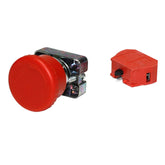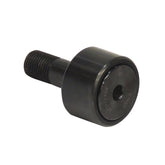Energy Efficiency Upgrades for Hangar Doors: Reducing Operational Costs
Enhancing the energy efficiency of aircraft hangar doors is a strategic approach to reducing operational costs and promoting environmental sustainability. By integrating advanced components and technologies, aviation facilities can achieve significant energy savings and improved performance.
1. High-Performance Motors & Operators
Upgrading to energy-efficient motors and operators enhances the performance of automatic hangar doors. Modern motors consume less electricity while delivering optimal torque, reducing energy expenditure during door operation. Additionally, advanced operators offer precise control, minimizing unnecessary movements and further conserving energy.

2. Insulated Panels and Weather Seals
Implementing insulated door panels and high-quality weather seals is crucial for maintaining internal temperature stability within hangars. Effective insulation reduces heat transfer, thereby decreasing the load on heating and cooling systems. Properly installed weather seals prevent drafts and energy losses, contributing to a more controlled and energy-efficient environment.
3. Hydraulic Hangar Doors
Hydraulic hangar doors offer energy efficiency through their insulation properties, which help regulate indoor temperatures and reduce heating and cooling costs. Their rapid operation minimizes the loss of conditioned air, contributing to overall energy savings and supporting environmental sustainability initiatives.
4. Air Curtains
Installing air curtains above hangar door openings creates a barrier that minimizes the exchange of indoor and outdoor air. This technology effectively reduces energy losses by preventing drafts and maintaining internal climate conditions, especially in facilities where doors remain open for extended periods.

5. Regular Maintenance and Upgrades
Routine inspection and maintenance of hangar door components, such as rollers, bearings, and seals, ensure optimal performance and energy efficiency. Addressing wear and tear promptly prevents energy losses associated with malfunctioning parts. Upgrading outdated components to modern, energy-efficient alternatives can further enhance overall system performance.
By focusing on these energy efficiency upgrades, aviation facilities can achieve substantial reductions in operational costs while enhancing the performance and longevity of their hangar doors. Implementing these strategies not only leads to financial savings but also supports environmental sustainability efforts within the aviation industry.





